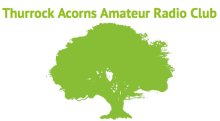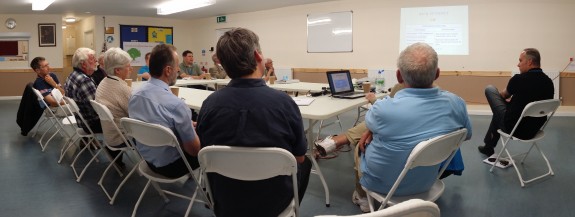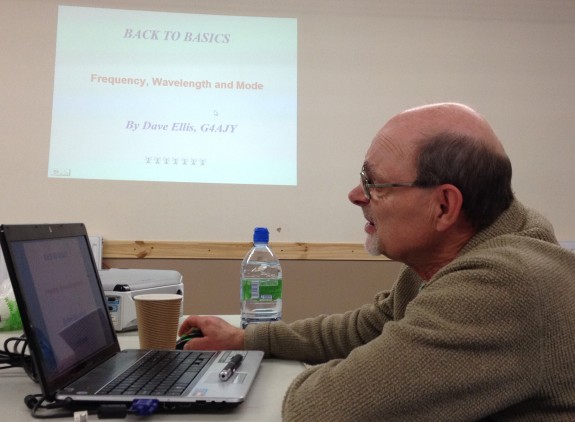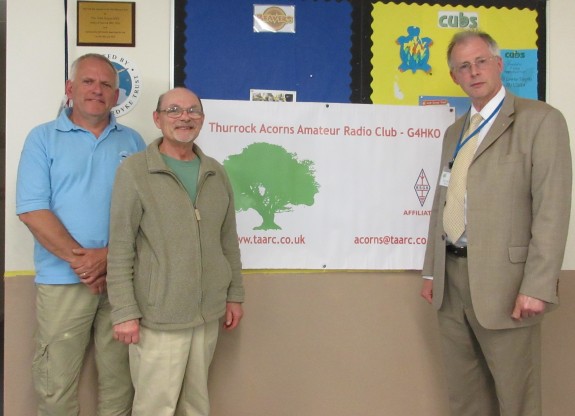 The Thurrock Acorns Amateur Radio Club met for their monthly meeting on Tuesday the 17th of June 2014.
The Thurrock Acorns Amateur Radio Club met for their monthly meeting on Tuesday the 17th of June 2014.
Members gathered to hear an update on the progress that the club has been making on various activities, including discussion of the upcoming TAARC event at the RSPB Nature Reserve in Rainham. There was also a quick report on the club’s appearance at the Waters & Stanton Open Day. The club’s new banner has arrived too (see below), and will be deployed at the weekend’s event. The August club night is planned a a club BBQ, so cross fingers for good weather.

Back To Basics
The evening’s talk came from Dave Ellis G4AJY, and is a part of his “Back to Basics” series. This talk concentrated on Frequency, Wavelength and Modes – giving an overview of each area. It’s fair that most amateurs will be familiar with these topics, and Dave started each section with a very simple overview, before moving on to a more detailed look. The Thurrock Acorns members are a good mix of all licence levels and experience, so the talk had something for everyone, especially those looking to progress to the next licence level

Topics covered included:
- DC vs AC (and why AC is a better domestic choice)
- The frequency spectrum
- The relationship between wavelength and frequency
- Propagation
- Various amateur modes and popular misconceptions
Included in Dave’s presentation was some discussion of the joys of 2m – with easy-to-make efficient antennas, this a great band and we as amateurs need to make as much use of it as possible.
Dave explained the meaning behind CW – Continuous Wave, explaining that at 40wpm at low frequencies, a Morse ‘dot’ would contain around 130,000 cycles of oscillation. CW is simple, narrow bandwidth, offers good noise immunity and uses low power – the downside is – you have to learn it!
The next misconception discussed was that, at least in the domestic world, “AM” is synonymous with Medium Wave, due to home radios typically being labelled with AM/MW. “AM” is a mode, and “MW” is a wavelength. In AM transmissions, 83% of input power is wasted – hence use SSB.
FM has the benefit of the “capture effect”, picking the strongest signal with reduced noise. A broadcast radio station uses a bandwidth of around 150khz, but amateurs use 12.5khz
The talk ended with discussion of data modes, including RTTY, PSK31 and SSTV.
TAARC and SEARS
The meeting saw the first cooperation between TAARC in Grays and SEARS in Thundersley, near Rayleigh. As a planned speaker was not able to attend, TAARC contacted Essex Ham for ideas about another speaker. Working with neighbouring club SEARS, Essex Ham was able to help get TAARC in touch with Dave, who kindly agreed to be the evening’s speaker.

The next TAARC meeting is on Tuesday the 15th of July. More details at www.taarc.co.uk

